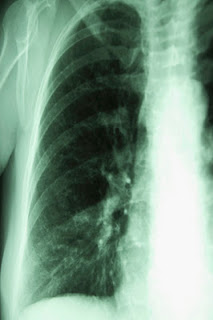People who eat baked or broiled fish on a weekly basis may be improving their brain health and reducing their risk of developing mild cognitive impairment (MCI) and Alzheimer's disease, according to a study presented today at the annual meeting of the Radiological Society of North America (RSNA).
"This is the first study to establish a direct relationship between fish consumption, brain structure and Alzheimer's risk," said Cyrus Raji, M.D., Ph.D., from the University of Pittsburgh Medical Center and the University of Pittsburgh School of Medicine. "The results showed that people who consumed baked or broiled fish at least one time per week had better preservation of gray matter volume on MRI in brain areas at risk for Alzheimer's disease."
Alzheimer's disease is an incurable, progressive brain disease that slowly destroys memory and cognitive skills. According to the National Institute on Aging, as many as 5.1 million Americans may have Alzheimer's disease. In MCI, memory loss is present but to a lesser extent than in Alzheimer's disease. People with MCI often go on to develop Alzheimer's disease.
For the study, 260 cognitively normal individuals were selected from the Cardiovascular Health Study. Information on fish consumption was gathered using the National Cancer Institute Food Frequency Questionnaire. There were 163 patients who consumed fish on a weekly basis, and the majority ate fish one to four times per week. Each patient underwent 3-D volumetric MRI of the brain. Voxel-based morphometry, a brain mapping technique that measures gray matter volume, was used to model the relationship between weekly fish consumption at baseline and brain structure 10 years later. The data were then analyzed to determine if gray matter volume preservation associated with fish consumption reduced risk for Alzheimer's disease. The study controlled for age, gender, education, race, obesity, physical activity, and the presence or absence of apolipoprotein E4 (ApoE4), a gene that increases the risk of developing Alzheimer's.
Gray matter volume is crucial to brain health. When it remains higher, brain health is being maintained. Decreases in gray matter volume indicate that brain cells are shrinking.
The findings showed that consumption of baked or broiled fish on a weekly basis was positively associated with gray matter volumes in several areas of the brain. Greater hippocampal, posterior cingulate and orbital frontal cortex volumes in relation to fish consumption reduced the risk for five-year decline to MCI or Alzheimer's by almost five-fold.
"Consuming baked or broiled fish promotes stronger neurons in the brain's gray matter by making them larger and healthier," Dr. Raji said. "This simple lifestyle choice increases the brain's resistance to Alzheimer's disease and lowers risk for the disorder."
The results also demonstrated increased levels of cognition in people who ate baked or broiled fish.
"Working memory, which allows people to focus on tasks and commit information to short-term memory, is one of the most important cognitive domains," Dr. Raji said. "Working memory is destroyed by Alzheimer's disease. We found higher levels of working memory in people who ate baked or broiled fish on a weekly basis, even when accounting for other factors, such as education, age, gender and physical activity."
Eating fried fish, on the other hand, was not shown to increase brain volume or protect against cognitive decline.
More on Alzheimer's:
According to statistics from the National Institute on Aging, Alzheimer’s disease is the most common form of dementia in older people. Alzheimer’s is a progressive brain disease; it is irreversible and causes a decline in memory and cognitive skills.
Alzheimer’s disease is the seventh leading cause of death in the United States. It is the only cause of death among the top 10 that cannot be prevented, cured or even significantly arrested. Two-thirds of people over the age of 65 who have the disease are women. This is a startling statistic, and one that requires increased attention and research.
“Clearly, this is an illness of women more than men,” said Victor Henderson, MD, MS, Professor of Epidemiology and Neurology and Neurological Sciences at Stanford University. “In part, it has to do with the fact that women live longer than men. There are real differences in longevity.”
Researchers have long studied the relationship between the hormone estrogen and Alzheimer's disease, but the results have been inconclusive thus far. “There are other risk factors that may come into play,” said Henderson, “which can further explain why women may be predisposed to Alzheimer’s disease.” Some of these factors include: family history, genetics, and some evidence suggests heart disease.
One of the first signs of Alzheimer’s disease may be forgetfulness and difficulty remembering newly learned information. But the disease gradually gets worse. According to the National Alzheimer’s Association in Chicago, other symptoms develop over time and may include:
• Challenges in planning or problem solving.
• Difficulty completing familiar tasks at home, at work, or at leisure.
• Confusion with time or place.
• Trouble understanding visual images and spatial relationships.
• New problems with words in speech or writing.
• Misplacing objects and losing the ability to retrace steps.
• Decreased or poor judgment.
• Withdrawal from work or social activities.
• Changes in mood and personality.











